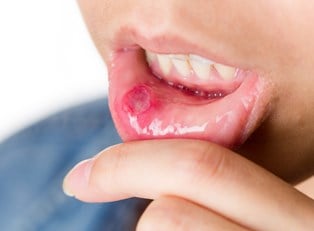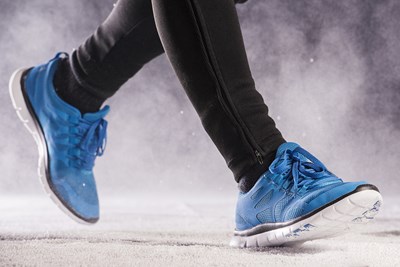Cheilitis is an inflammation of the lips. Uncomfortable and stubborn, even the most common form of cheilitis can develop easily -- but it is not always so easy to get rid of. Here’s a look at the types, causes, symptoms, and treatments of cheilitis.
Types of Cheilitis
There are several types of cheilitis which present with largely similar symptoms from a variety of causes. One of the more common forms is irritant contact cheilitis.
Other types that more accurately represent dermatitis include:
- Allergic contact cheilitis is a chapping and inflammation as a result of an allergen
- Angular cheilitis is an inflammation and chapping specific to the corners of the mouth.
- Granulomatous cheilitis is characterized by an irregular swelling beginning with the lips and sometimes spreading to other parts of the face.
- Actinic cheilitis is a chapping and swelling of the lips caused specifically by prolonged sun exposure.
- Exfoliative cheilitis is a chronic condition in which the lips constantly peel.
- Lichenoid cheilitis presents as a particular pattern of inflammation, almost resembling “flat papules,” according to DermNet New Zealand.
- Pigmented contact cheilitis is a discoloration as a result of contact with an allergen.
Forms of cheilitis that develop as a result of a specific underlying disorder include:
- Crohn skin disease, which is caused by Crohn’s Disease, an inflammatory bowel disorder.
- Cutaneous lupus erythematosus, which is caused by lupus erythematosus.
- Eczematous cheilitis, which is caused by eczema.
Causes of Cheilitis
The exact cause depends largely upon the particular type of cheilitis. Dermatitic forms of cheilitis generally result because of exposure to an irritant or allergen--with the exception of eczematous cheilitis; eczema is an immune disorder.
The irritation of these conditions causes the skin to dry out and peel, leading to the symptoms of irritant contact cheilitis. Many forms of cheilitis (including allergic contact, granulomatous, and pigmented contact cheilitis) are an allergic response. Lipsticks, in particular, can incite these forms of cheilitis, although toothpaste, metals, foods, medication, nail polish, and other allergies may be responsible.
In addition to those underlying diseases with their own types of cheilitis, certain bacterial or fungal infections may be responsible. Angular cheilitis can result from a tendency to drool from the corners of the mouth, anatomical irregularities of the upper lip, irritant contact cheilitis, or oral herpes and cold sores.
Common chapped lips generally develop because of extensive contact with the wind, particular in dry or cold weather. In general, cold or dry weather; picking, licking, or chewing at the skin of the lips; and dehydration (particularly in the very young or very old) may contribute to cheilitis. Other causes of cheilitis include smoking, a sunburn, isotretinoin or acitretin treatment, or an inflammation of the mouth or face that spreads to the lips.
Symptoms of Cheilitis
From the suffix of cheilitis, it is easy to deduce that one of the defining symptoms shared by the different forms of cheilitis is inflammation. Certain forms, such as pigmented contact cheilitis, may involve a discoloration (beyond heightened redness). Different types of cheilitis may range from extremely painful to mildly uncomfortable Cracking may occur, leading to peeling skin and mild bleeding.
In some cases, small lesions or papules may even form. This damage to the skin may occur in a specific area (for example, allergen contact cheilitis brought on by a musical instrument may cause symptoms only on the part of the lip that comes into contact with the instrument in question). More severe forms of cheilitis can cause blisters, oozing, or the formation of a crusty material.
Treating Cheilitis
Unfortunately, there is no quick “chapped lips cure” when it comes to cheilitis. Different types of treatments may be needed. Those incited by an allergen generally need topical or oral steroids or antihistamines. Cheilitis brought on by an underlying disorder may require a treatment specific to that disease. When infection is involved, oral or topical antibiotics may be helpful. Most forms of cheilitis will heal on their own, given time. Staying well hydrated, avoiding picking or licking your lips, and keeping them protected from the elements with a strong balm can help alleviate discomfort and speed healing.



